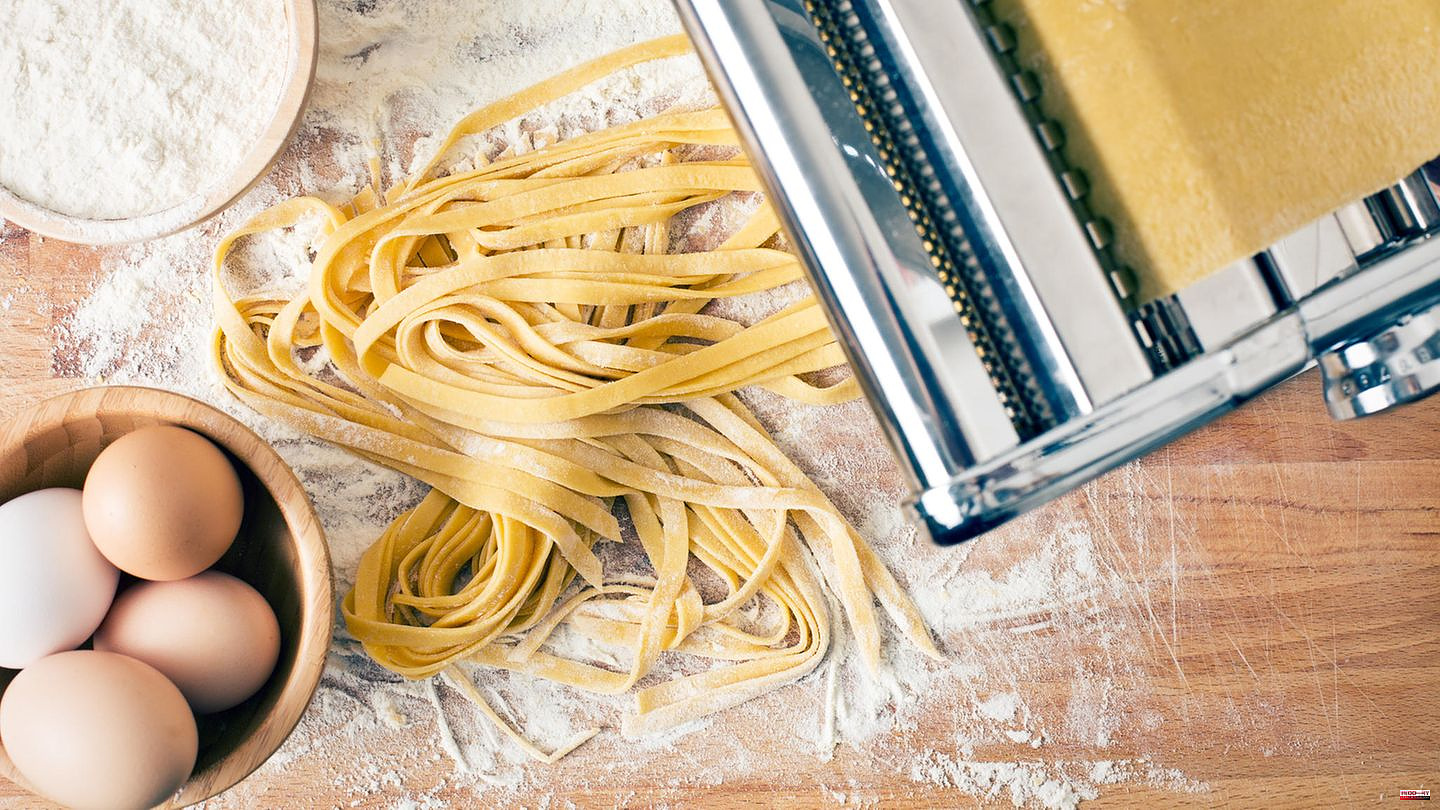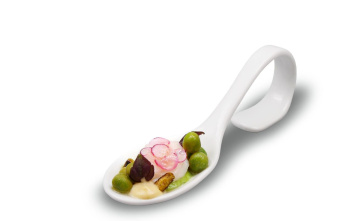According to current statistics, in Germany alone, over 14 million people aged 14 and over eat pasta several times a week. This means that over seven kilograms of pasta end up on our menu every year - and that's not even really a lot. For comparison: In Italy, the annual per capita consumption is 25 kilograms. Whether spaghetti or gnocchi, tagliatelle or cannelloni, farfalle or penne, ravioli or tortellini: Real pasta fans always have several types of pasta so that they have the right pasta in stock for every dish. But why always buy the products shrink-wrapped in plastic when the production of fresh pasta is child's play? You only need three basic ingredients for this - and if necessary a pasta machine.
The classic pasta dough variant with egg is particularly sticky and therefore very well suited for different shapes of tagliatelle (e.g. tagliatelle, fettuccine or pappardelle) or also ravioli and tortellini. You only need three ingredients for the pasta dough:
Important: The proportion of flour to eggs is always 1:1, regardless of how much pasta you want to make. For four people, take 300 grams of flour and three eggs, plus a pinch of salt. A cooking pot, cling film, a knife and a rolling pin - or a pasta machine - are then required for the preparation. Proceed as follows:
Pour the flour onto a clean work surface and make a well in it and add the eggs and salt. Using your hands or a fork, mix the flour together, gradually heaping it over the eggs from the outside.
Once a crumbly mass forms, you can slightly moisten your hands to knead the dough until smooth for five to ten minutes. It is best to always form a ball, flatten it again and then fold it. Repeat this process several times.
When the dough is nice and smooth and no longer sticks to your hands, shape it into a ball again and wrap in cling film. Let the dough rest at room temperature for 30 minutes before processing it further.
To roll out the pasta thinly, you will need a rolling pin. If you don't want to make tagliatelle (e.g. tagliatelle) but more elaborate varieties such as ravioli, you will need a rolling pin or suitable cutters. Before you start rolling out, you should cut the dough into four equal parts. While you start with the first piece, leave the rest wrapped in cling film so as not to dry out:
Finally, the dried pasta is cooked in boiling salted water. Depending on how al dente you prefer to eat your pasta, a cooking time of three to a maximum of five minutes is sufficient. Then pour the water through a sieve and enjoy your freshly made pasta.
To roll out the pasta dough, you need one thing above all: time. And actually power too, considering how long it takes for the dough to be thin enough to cut into fine strips. If you want to save yourself the effort, you can use a pasta machine. Inexpensive models are already available for around 50 euros, a fully automatic pasta machine with a weighing function and shaping discs costs significantly more (e.g. from Philips for 219 euros).
Here, too, it is important to quarter the finished pasta dough before further processing. Take a quarter and flatten it with the palm of your hand to form an oval shape. Before using the pasta machine, the roller must be dusted with flour so that no dough sticks to it. Then proceed as follows:
Adjust the roller to the widest possible distance and turn the dough through the pasta maker. Then fold the dough twice (always towards the middle) and pass the narrower side through the roller one more time. Repeat this process three times.
When the dough is pliable, decrease the roller gap one more notch and knead the dough again. Reduce the pasta machine one step after each roll until the dough has reached the desired thickness. Remember to flour the roller every now and then.
Tip: If the pasta dough is too long to press through the roller, you can simply cut it in half and then process the individual pieces further.
Instead of eggs, you can simply use durum wheat semolina to prepare vegan pasta dough. Due to its coarse grain, the dough is more al dente and is therefore particularly suitable for making spaghetti, penne, rigatoni or fusilli - actually all types of pasta that you usually prefer to eat al dente anyway.
For the preparation you only need the following ingredients:
Tip: If you cannot tolerate wheat flour, you can alternatively use wholemeal, chestnut, chickpea or buckwheat flour. Once you have all the ingredients together, proceed with the preparation and further processing of the pasta dough as described above. We wish you every success and, of course, bon appétit!
This article contains so-called affiliate links. There is more information here.












